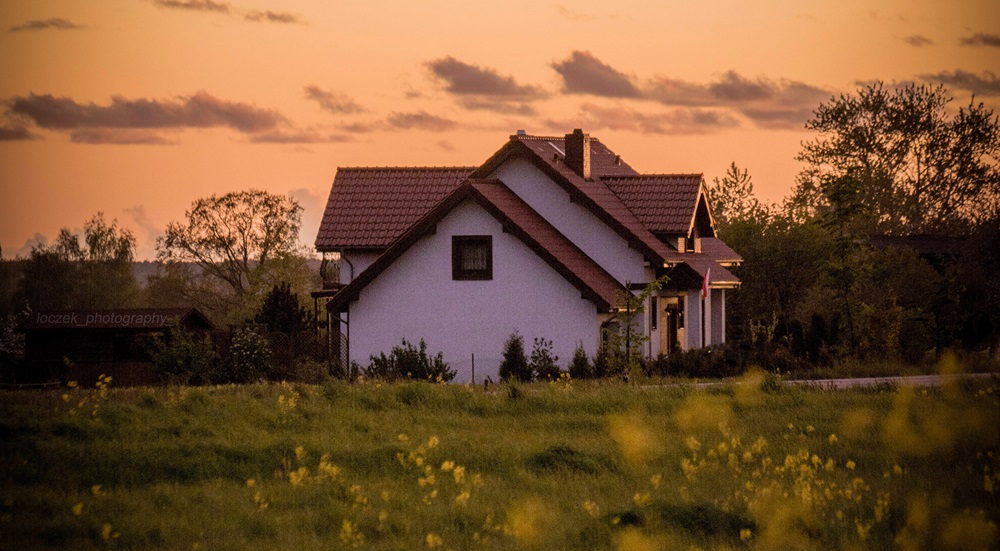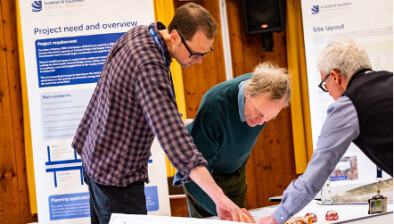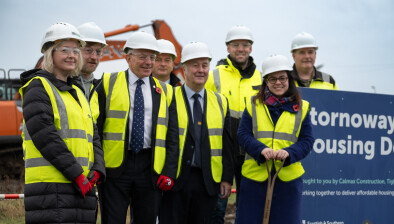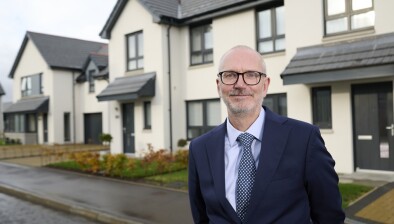SSEN Transmission aims to unlock delivery of more than 1,000 new homes

SSEN Transmission has pledged to support the delivery of more than 1,000 new homes across the north of Scotland by 2030 with a landmark new strategy.
Key to its new Housing Strategy is SSEN Transmission’s Pathway to 2030 programme – a £20 billion investment to upgrade the transmission network in the north of Scotland in support of energy security and national net zero ambitions.
Workers’ accommodation will be required to deliver the proposed projects, and SSEN Transmission is aiming to create a legacy in the communities that will host its workforce by delivering housing that will support local need when the projects are completed.
The company is working with councils, registered social landlords and other housing organisations to deliver new homes through various models including identifying sites for worker accommodation where the infrastructure required to support temporary accommodation can be used to support housing delivery when the projects conclude.
In collaboration with housing stakeholders, the initiative aims to unlock investment through long-term leases on new build homes associated with permanent housing that has been specified as needed within local authority housing plans. This approach has garnered significant interest from local authorities and it is hoped could serve as a model for infrastructure developers across Scotland.
SSEN Transmission will also seek to work with councils to support local empty homes initiatives that bring vacant homes back into use.
Origins of the strategy
By unlocking investment through long-term leases, SSEN Transmission’s housing strategy manager, Mary Jarvie, told Scottish Housing News that the proposal not only addresses the immediate housing needs of transient workers but also leaves a lasting, positive legacy for the local communities.
Mary said: “We’re building £20 billion worth of energy infrastructure between now and 2030. These are accelerated projects because of the energy security and net zero obligations that we have to meet. And so it’s a big mobilisation. It’s a huge investment. And so at peak in 2027, we’ll have over 5,000 workers mobilised across the rural north of Scotland.
“We’re doing that in the midst of a housing crisis. And because of the remote rural nature, while we will drive up local supply chains and local employment as much as we possibly can, we are going to need to house a lot of transient workers. There would be perfectly understandable resistance from planning authorities and communities if we were to do that in a way that would exacerbate the housing crisis.
“And so that’s a key driver for us is to support our host communities and also to de-risk the delivery of the infrastructure by ensuring that we have a smooth path to building it.”
Mary added: “Up until now, the normal model of accommodating temporary transitory workers is to build temporary accommodation on a greenfield site, to house workers there and then demobilise it and turn it back into a greenfield site afterwards.
“The cost of that is huge. And in the midst of a housing crisis, it seems unwise to spend that sort of money in a way that doesn’t leave behind something useful for our host communities. So those are the drivers. It’s scale, it’s a housing crisis, and it’s the cost of temporary accommodation.”
Template for other infrastructure developers
The scale of this delivery of new housing in local authority areas in the north of Scotland includes around 400 homes in Highland and a similar number in Aberdeenshire, and other significant housing activity is planned elsewhere across SSEN Transmission’s area. Further announcements with details of local housing projects in different council areas will be made in the coming months.
SSEN Transmission will outline its plans at the Housing Challenge Summit taking place in Aviemore today, where it will launch its new housing strategy.
The strategy has been heralded as a potential game-changer that could be used as a template by other infrastructure developers, driving housing development in the communities where their projects are based.
Rob McDonald, SSEN Transmission’s managing director, said: “Our commitment to support the delivery of more than 1,000 new homes in the north of Scotland reflects ongoing work led by SSEN Transmission with the support of our contractors and partners, focused on finding workforce accommodation solutions that will provide a legacy for communities where the lack of housing for local people is a key issue.
“This is a significant and innovative contribution to addressing the housing challenges in the north of Scotland, and it also demonstrates how we can work in partnership to develop imaginative proposals that will deliver new homes and act as a template for other developers.
“Discussions are ongoing with local authorities, developers and registered social landlords over the location and scale of potential projects, and we expect to make further announcements in the coming months that will demonstrate substantial benefits to local communities.
“Our £20bn investment in the transmission network is the biggest investment programme the north of Scotland has seen in decades – and our ambition to create a housing legacy reflects our determination to make a lasting and positive contribution in the communities hosting our infrastructure.”
Housing minister, Paul McLennan, said: “I welcome the innovative approach being taken by SSEN Transmission to support the delivery of an additional 1,000 new homes across the north of Scotland. These homes will initially be for workers upgrading the local energy infrastructure to support Scotland’s net-zero targets and will support a longer-term legacy across the region.
“We will work with SSEN Transmission and other partners to ensure that the right homes are delivered in the right place, to benefit local communities for generations to come.
“Good quality housing is essential to attract and retain people in our communities. We remain focussed on delivering 110,000 affordable homes across Scotland by 2032, with at least 70% for social rent and at least 10% in our rural and island communities supported by our Rural and Island Housing Action Plan.”
Response from social landlords
Asked about how the plans have been received so far from social landlords, Mary Jarvie told SHN the response has been “really enthusiastic”.
“It has just been a really exciting example of true private and public sector collaboration and also really interesting because our demand is different from a mainstream commercial demand,” she added.
“We have a demand for temporary accommodation, but we also have a demand for legacy. And so the local authorities and housing developers and RSLs have all been really creative in their response to that. And also, we’ve got some really good relationships. It has been properly generating ideas and working through solutions together. So that’s been really exciting.”
Carolyn Lochhead, director of external affairs at the Scottish Federation of Housing Associations, said: “Our members are looking forward to working alongside SSEN Transmission to provide much-needed homes across the north of Scotland.
“The housing emergency has hit rural Scotland particularly hard and has exacerbated so many other existing challenges such as depopulation, labour shortages, and underinvestment in rural communities.
“This investment will be vital for communities across the north of Scotland and is a good example of collaborative working to increase the supply of housing.”
The Highland Council’s chair of Housing and Property Committee, Cllr Glynis Campbell Sinclair, said: “We are working with partners and developers across the private and public sector to identify creative solutions to deliver new homes and we very much welcome innovative proposals such as this coming forward for consideration. SSEN Transmission has embraced the provision of legacy housing, which is a key part of our Social Value from Renewables Charter, and I look forward to many other companies coming forward with the same level of intent.”









